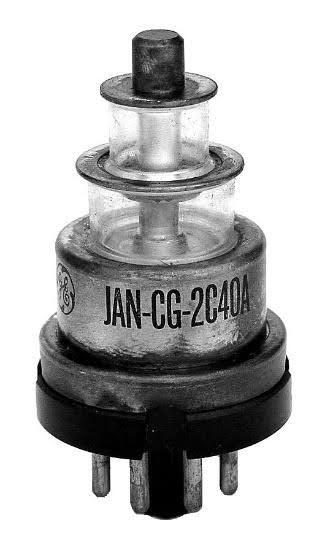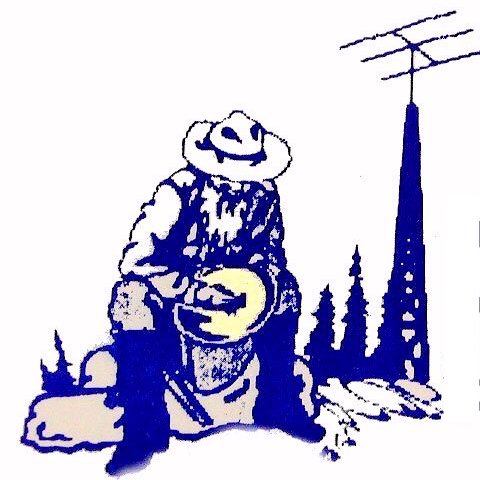by Norm Wilson N6JV – Visit the museum at N6JV.com
2C40 The Lighthouse
Many of the tubes that were used to make the first experimental RADAR sets were standard types as the frequency was relatively low and would work without modification. Early large ground RADARs were in the 100 – 200 MHz range. Developing higher RADAR frequencies quickly became a race to stay ahead of the competition and their ability to jam your system. The limit that a tube could operate at is determined by its output capacity and the length of any internal inductances. The grid to plate spacing in the 2C40 was only .3 mm.

The 2C40 was developed to be a low power oscillator or amplifier at a maximum of 3370 MHz to be used in microwave receivers or signal generators. That high frequency was achieved by using a tube with an output capacity of 1.3 pf and coaxial tank elements that were designed to mount directly on the tube. The tunable cavity was designed to use concentric cylinders that were sized to slide over the 2C40 and make contact. When the cavity was assembled, the tube could be plugged into the end and a socket fed with a cable supplied filament power. The filament of the 2C40 was 6.3 volts at .75 amps. In a conventional oscillator or amplifier, the plate voltage would be 450 maximum at 22 ma. If used in a pulse application, 1400 volts could be used.
The 2C40 had a low noise figure for this period so it was used in preamplifiers for RADAR receivers such as the AN/TPS -1D and the AN/FPS-37 and the BP shipboard IFF interrogator.
